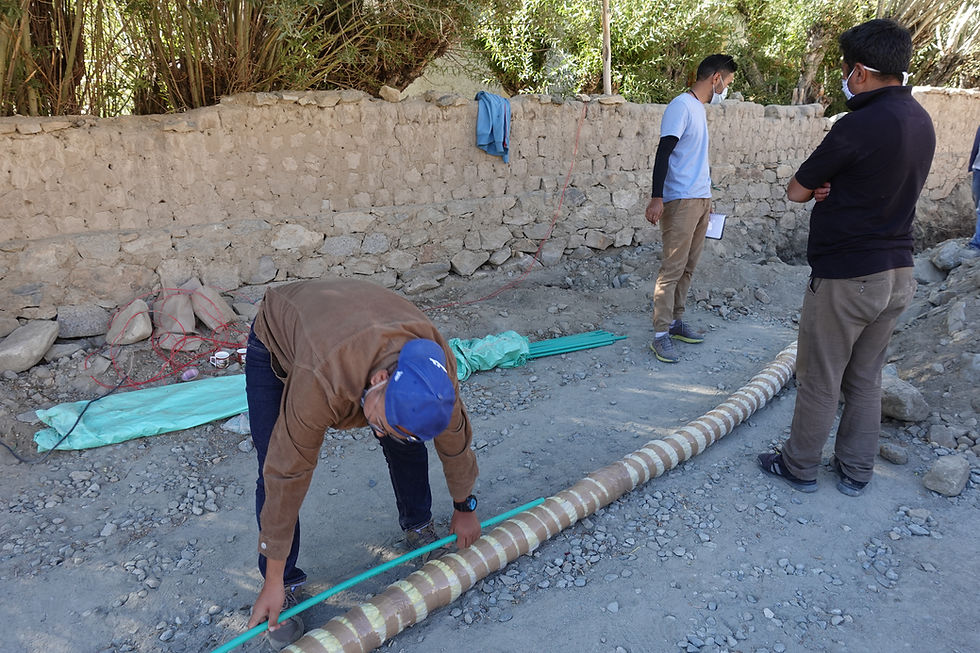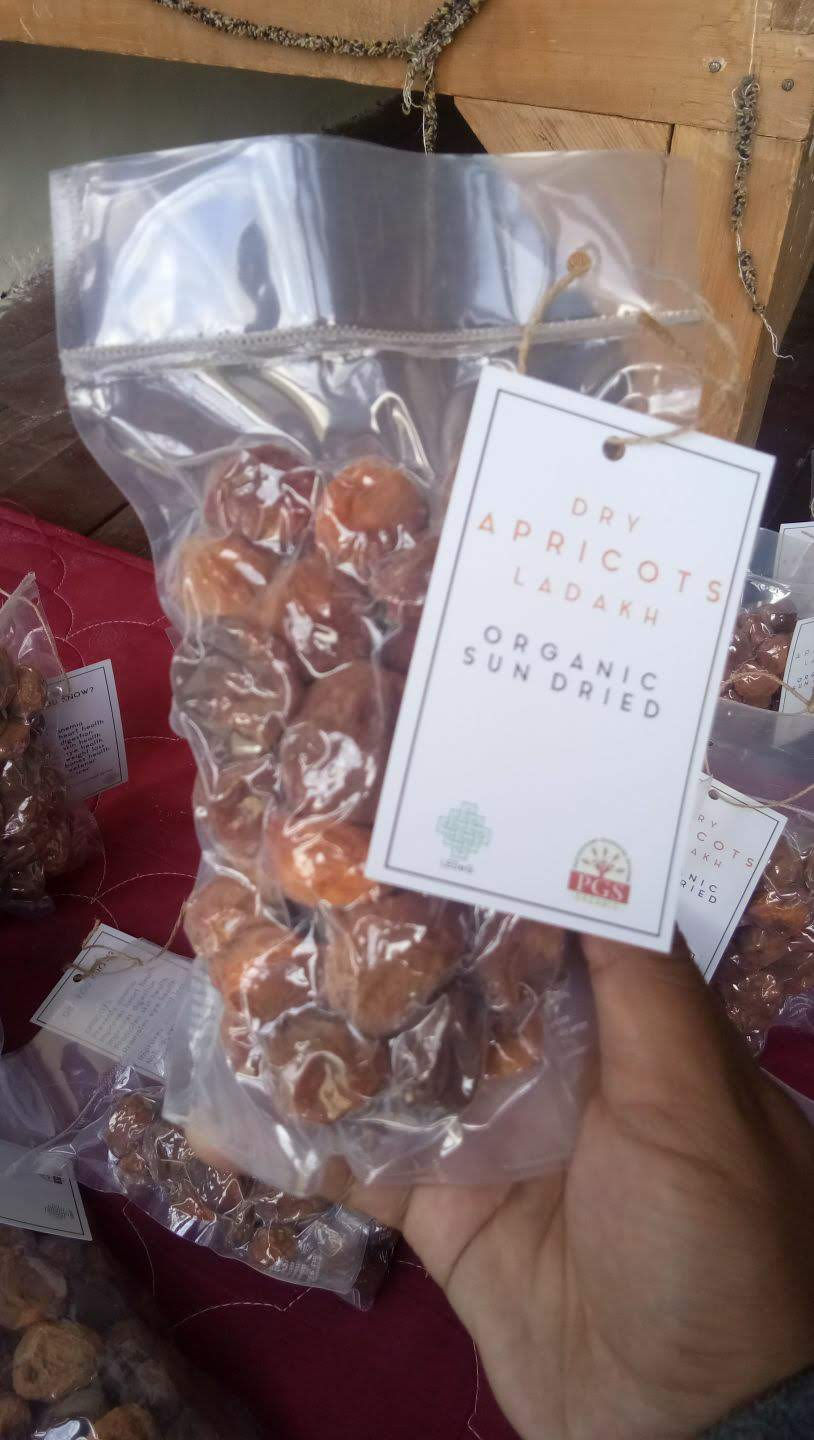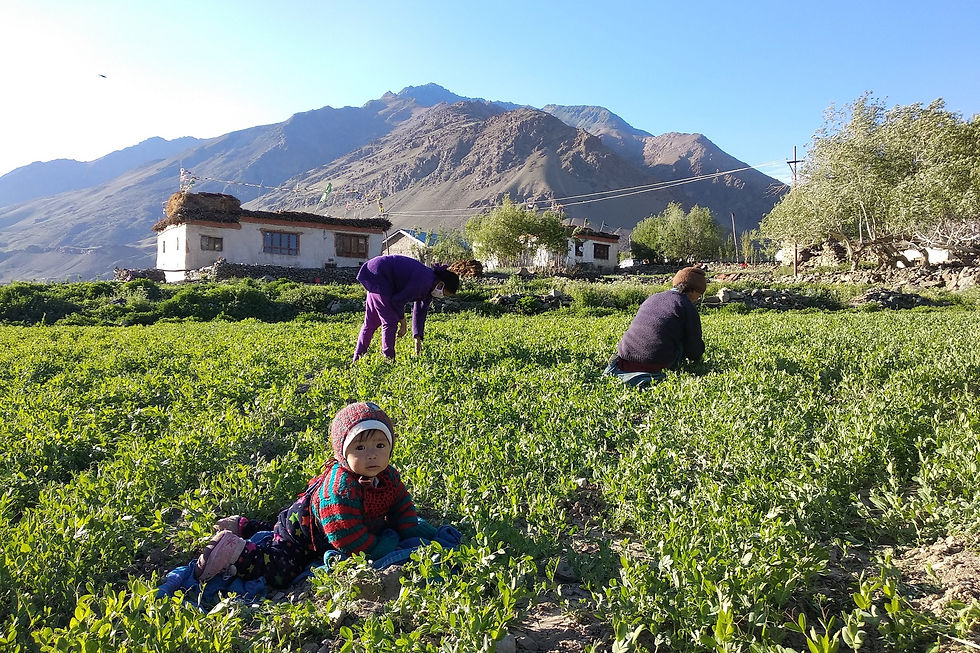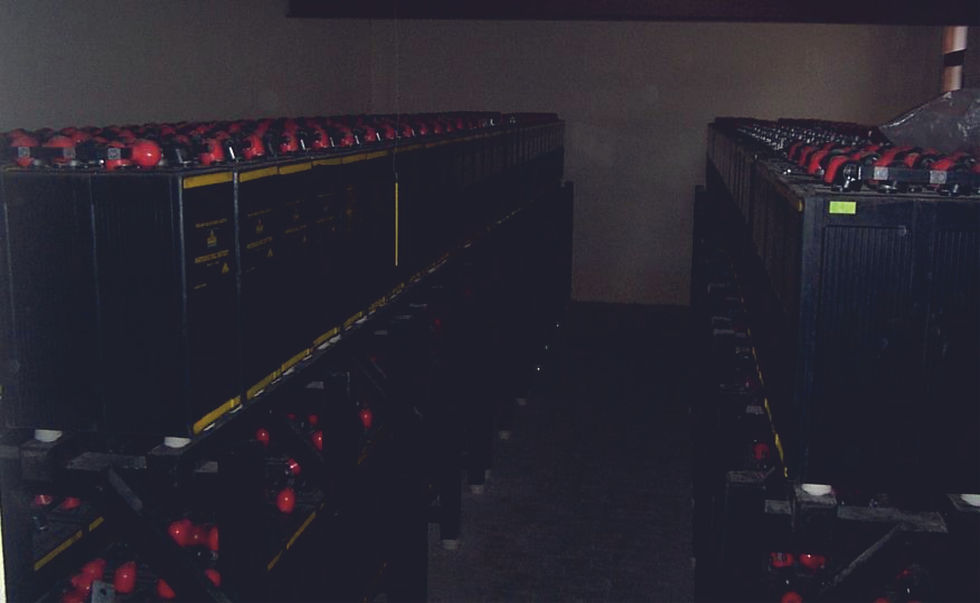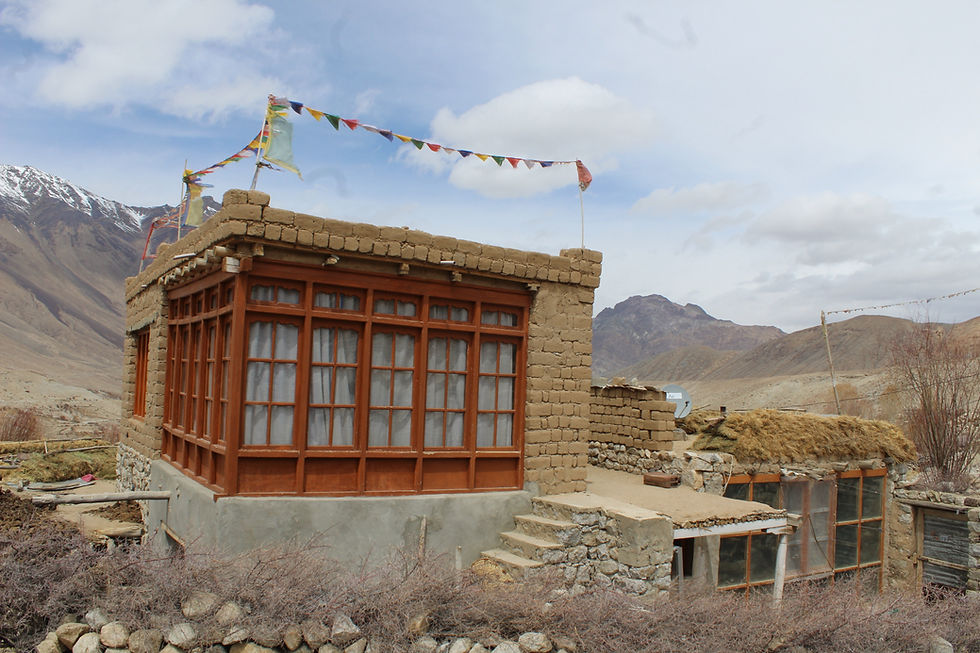Our Journey
Integrated Ecological Sustainable Development Project
2021
Project Introduction:
The Integrated Ecological Sustainable Development Project aims to strengthen climate-resilient practices in Ladakh through community-driven agriculture, water management, and organic farming. By addressing critical challenges such as youth migration, water scarcity, and organic farming knowledge, the project seeks to create sustainable livelihoods and promote environmental stewardship.
Key Achievements in 2021:
-
Greenhouse & Youth Migration:
A 16x32ft polycarbonate greenhouse was built in Likir to enable year-round vegetable cultivation. This initiative helps reduce youth migration by providing income-generating opportunities locally.-
Outcome: Successful winter crops, contributing to farmers' sustainability and creating potential for expansion.
-
-
Organic Farming & Composting:
27 compost pits were constructed in Ayee, allowing farmers to produce organic compost and sell excess to the market.-
Outcome: Increased self-sufficiency in manure production and new income opportunities for farmers.
-
-
Water Management:
An artificial glacier was built in Ayee to ensure irrigation during water-scarce months, addressing the impact of melting glaciers due to climate change.-
Outcome: Improved crop production through a sustainable water supply for irrigation.
-
-
Community Engagement & Gender Equality:
Youth and women's self-help groups were actively involved in project activities, including organic farming and composting.-
Outcome: Increased female participation in farming and decision-making, fostering gender equality within the community.
-
Royal Enfield Project
2022 - 2024
Ice Hockey Coaching for Students: The Ice Hockey Coaching initiative under the Royal Enfield Project aimed to provide ice hockey coaching and equipment to children from rural Ladakhi areas, particularly Chumathang and Sumoor. The project sought to foster winter sports in Ladakh and promote youth participation in competitive sports while encouraging local tourism.
Key Activities & Achievements:
-
Coaching in Chumathang:
-
Duration: 15 days (Feb 17 - Mar 3, 2023)
-
Participants: 40 students (ages 8-12)
-
Outcome: Students developed basic ice hockey skills, including balance, skating, turns, and teamwork.
-
-
Impact:
-
Skill Development: Increased ice skating skills and confidence.
-
Community Engagement: Positive feedback from parents and local leaders, with requests for future training.
-
Ice Skating Coaching for Students: The Ice Skating Coaching program, part of the Royal Enfield Project, was designed to provide students from remote Ladakhi villages with access to ice skating coaching and equipment. This initiative helped improve physical fitness and fostered social interaction while preserving Ladakhi winter sports traditions.
Key Activities & Achievements:
-
Coaching in Six Villages:
-
Locations: Skara Zing, Korzok, Chumathang, Zanskar Saini, Pibiting, Karsha
-
Participants: 328 students
-
Outcome: Enhanced physical fitness, coordination, and social skills through ice skating coaching.
-
-
Impact:
-
Physical Health: Improved cardiovascular health and physical fitness.
-
Social Skills: Strengthened community ties and increased social interaction.
-
-
Shanti Stupa Waste Management: As part of the Royal Enfield Project’s waste management initiative, LEDeG constructed a masonry dustbin at Shanti Stupa, Leh, to address the growing waste management challenges due to high tourist footfall. The aim was to improve cleanliness and environmental sustainability at a key tourist site.
Key Activities & Achievements:
-
Masonry Dustbin Construction:
-
Location: Near the entrance of Shanti Stupa
-
Dimensions: 5x7 ft concrete dustbin
-
Outcome: Improved waste disposal system, reducing litter and enhancing the visitor experience.
-
-
Impact:
-
Tourists: Provided a hygienic waste disposal system, improving their visit.
-
Environment: Reduced litter and protected the environment.
-
Local Community: Improved waste management and sanitation.
-
Green Pit Stops (Tourist Centre Kharu): The Green Pit Stops (Tourist Centre Kharu), part of the Royal Enfield Project, was established to promote sustainable tourism by providing clean drinking water, hygienic toilet facilities, and a café for travelers. It also aimed to create income-generating opportunities for the local community.
Key Activities & Achievements:
-
Facility Construction and Maintenance:
-
Facilities: Café, toilets, parking, and local handicrafts
-
Wi-Fi and Fire Safety: Installed Wi-Fi and fire extinguishers
-
Outcome: Fully operational facilities, attracting tourists and benefiting the local community.
-
-
Impact:
-
Tourism: Enhanced tourism experience with clean facilities and local cuisine.
-
Local Community: Provided livelihood opportunities for local women operating the café.
-
Sustainability: Promoted eco-friendly tourism and waste management.
-
Implementation of Science-Based Spring Shed Management in Ladakh
Ongoing (Part of a collaborative initiative)
Project Introduction:
This collaborative action-research initiative aims to enhance water security through scientific and socially inclusive spring shed management practices in Ladakh. The project, focusing on the Tunglung Mohallah of Basgo village, addresses water security challenges for communities dependent on two key spring sources — Spang Gongma and Spang Yokma.
Key Activities & Achievements:
-
Hydrogeological Mapping:
-
Objective: Conducted scientific assessments of spring sources and aquifer characteristics.
-
Outcome: Enhanced understanding of recharge zones and aquifer dynamics.
-
-
Community Engagement and Capacity Building:
-
Objective: Trained local communities in participatory water management practices, with an emphasis on inclusion of women and marginalized groups.
-
Outcome: Strengthened local capacity for water management and ensured equitable water access.
-
-
Participatory Spring Shed Planning:
-
Objective: Co-developed management plans based on scientific data and local knowledge.
-
Outcome: Socially inclusive plans for sustainable spring shed management.
-
-
Conservation Measures:
-
Objective: Implemented conservation actions such as afforestation, recharge structures, and land use planning to protect and manage spring sources.
-
Outcome: Revitalization of spring sources and enhanced water availability.
-
-
Monitoring and Evaluation:
-
Objective: Monitored spring discharge, water quality, and community engagement to ensure sustainability.
-
Outcome: Ongoing evaluation to adapt interventions and ensure long-term success.
-
Integrated Urban Water Management (IUWM) in Leh and Kargil
2022 - Present
Building on the foundation laid between 2018 and 2021, LEDeG and BORDA have continued to expand the Integrated Urban Water Management (IUWM) initiative across Leh and Kargil from 2022 onward. The focus has shifted toward long-term sustainability through decentralized wastewater management, participatory planning, and alignment with climate resilience goals outlined in “Leh Vision 2030.”
New components have been introduced to deepen the impact of the project, including on-ground treatment solutions, structured planning tools, and waste management systems rooted in the 3R (Reduce, Reuse, Recycle) principles.
Results:
-
IWSSP Planning Toolkit developed to guide participatory and context-sensitive water and sanitation management.
-
IWSSP Action Plan created through consultations with local stakeholders, serving as a roadmap for future municipal water-sanitation strategies.
-
3R (Reduce, Reuse, Recycle) Facility launched in Leh to promote household waste segregation, with community incentive programs for recycling.
-
Training programs conducted for engineers, municipal sanitation staff, and community members on DEWATS operation, water conservation, and system maintenance.
-
Community awareness and behavior change campaigns held in partnership with schools and local groups to promote hygiene, water conservation, and segregation at source.
-
DPR developed for the new MRF facility at Bombgarh.
.jpg)
Waste Flow Diagram for Kargil
Ongoing
This project focuses on designing a comprehensive waste flow diagram for Kargil, aiming to map the entire lifecycle of waste. It will trace waste movement from its generation sources, such as households, markets, industries, and institutions, through collection methods to its final treatment and disposal pathways. The diagram will offer a clear visual representation of existing practices, highlighting inefficiencies and critical areas for improvement. By identifying key stakeholders, including waste generators, collectors, and disposal facilities, the project will provide a holistic understanding of the system. It will also evaluate the types and quantities of waste, segregation practices, and the role of informal sectors in waste management. The insights from the waste flow diagram will enable data-driven decision-making to optimize waste management. Potential benefits include improving collection efficiency, promoting recycling initiatives, and reducing the environmental impact of waste disposal. Moreover, the project will emphasize sustainable practices, such as composting, material recovery, and minimizing landfill dependency. This initiative addresses critical environmental challenges in Kargil, ensuring better planning and implementation of waste management policies.

Sanitation Safety Planning (SSP) Tool for Leh
Ongoing
The Sanitation Safety Planning (SSP) tool is being developed to address risks in the sanitation chain in Leh, ensuring safer and more sustainable waste management practices. This tool is designed to identify potential hazards at each stage of the sanitation process, including waste collection, treatment, and disposal. By systematically assessing these risks, the project aims to mitigate health and environmental hazards while enhancing the overall efficiency of the sanitation chain. Key objectives of the SSP tool include improving hygiene, protecting public health, and aligning with national sanitation standards. The tool prioritizes the identification of critical control points, enabling the implementation of targeted safety measures. It also emphasizes stakeholder engagement, ensuring that local communities, sanitation workers, and governing bodies are actively involved in the planning and execution process.

Integrated Solid Waste Management System in Kargil
Ongoing
The Sanitation Safety Planning (SSP) tool is being developed to address risks in the sanitation chain in Leh, ensuring safer and more sustainable waste management practices. This tool is designed to identify potential hazards at each stage of the sanitation process, including waste collection, treatment, and disposal. By systematically assessing these risks, the project aims to mitigate health and environmental hazards while enhancing the overall efficiency of the sanitation chain.
Key objectives of the SSP tool include improving hygiene, protecting public health, and aligning with national sanitation standards. The tool prioritizes the identification of critical control points, enabling the implementation of targeted safety measures. It also emphasizes stakeholder engagement, ensuring that local communities, sanitation workers, and governing bodies are actively involved in the planning and execution process.
By promoting safer sanitation practices, the SSP tool aims to reduce the risk of disease transmission, improve waste management systems, and enhance environmental sustainability. Additionally, it supports capacity-building initiatives through training programs for local stakeholders, fostering long-term adoption of safe sanitation practices.

